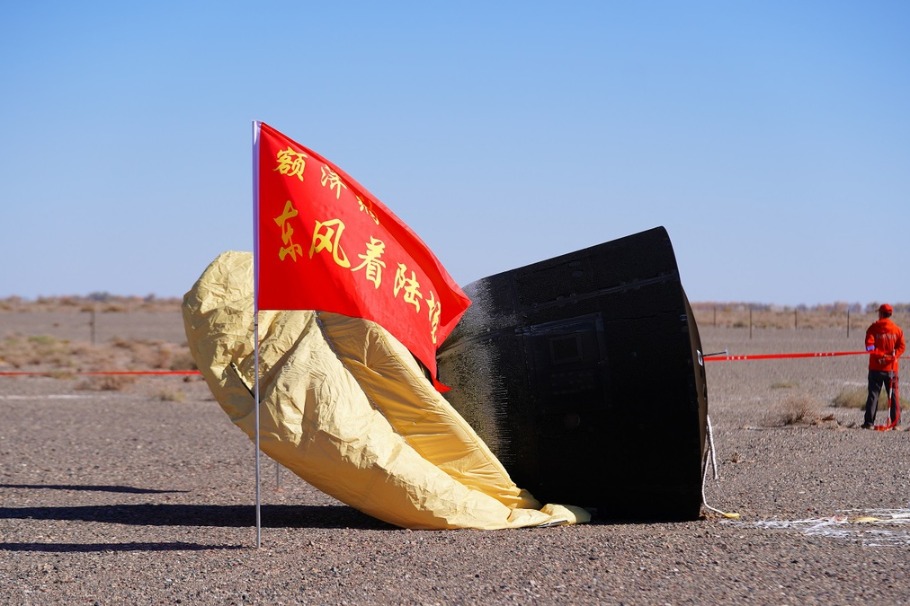China, Japan can cooperate to address aging


The aging populations of China and Japan present both challenges and opportunities for the two countries. As the percentage of elderly people in a country's total population increases, so too does the demand for age-appropriate goods, services and care. This leads to the emergence of the "silver economy", a sector focused on meeting the needs of the elderly.
While both countries face similar demographic trends with a decade's time gap, Japan has made significant strides in adapting to an aging society and developing its silver economy.
Both China and Japan have rapidly rising aging populations. Based on several Japanese institutes' studies, in 2020, about 18.7 percent of China's population was aged 60 or above compared with 28.7 percent in Japan. These figures are projected to increase in the coming decades, with the elderly population expected to account for one-third of the total population of China and 37.7 percent of Japan by 2050 — both figures being above the critical one-third threshold. The aging of these populations has significant implications for both countries, including:
A decline in the working-age population, which can lead to labor shortage, reduced economic growth and a strain on the social security system; a drastic rise in the demand for healthcare services, long-term care and social support; and the creation of new opportunities for economic growth through the development of the silver economy. Given the advancements in medical care and people's awareness, we have to redefine the "silver age" as 70 or above. This means people in their 60s can still be part of the workforce.
Japan has been at the forefront of adapting to an aging society, because it has implemented a range of policies and initiatives to address the challenges and seize the opportunities associated with a rapidly rising aging population.
Japan's success in this field can be attributed to the heavy investments it has made in industries such as healthcare, pharmaceuticals and eldercare services, which provide services to the elderly people. Also, the Japanese government has expanded social security programs, and has been promoting "active aging" through initiatives such as raising the official retirement age from 65 to 70 for both men and women, while raising the pension receiving age, and arranging for re-skilling and lifelong learning programs.
Moreover, Japan has been a leader in developing technologies that can help the elderly, such as robotics, autonomous vehicles and artificial intelligence.
As a result of these efforts, Japan has developed a robust silver economy, and is home to a number of globally leading companies in the healthcare, eldercare and technology sectors. In particular, grown-up children of almost every elderly person use the services of eldercare and nursing care centers, and elderly people's homes for their parents, significantly reducing the burden of caring for their parents.
All Japanese citizens buy national nursing care insurance, which is similar to the national healthcare insurance or income tax. And the two sides can explore new opportunities for cooperation in developing the silver economy.
The two countries, for example, can share the best practices and lessons learned in addressing the challenges of aging populations. Especially, the Japanese national nursing care insurance system is well designed and its ecosystem includes eldercare centers, elderly people's homes, nursing care centers and hospitals. All that one needs to provide eldercare services are covered by these national insurance systems.
Also, China and Japan can collaborate to conduct research into aging-related issues, such as healthcare, social services' advanced technology, autonomous vehicles, shopping drones, remote medical care and other medical related equipment like cameras, robotics and hearing aid.
The companies in the two countries also can form partnerships to develop and market products and services for the elderly people, and Chinese and Japanese investors can invest in companies that are part of the silver economy in each other's countries, promoting economic growth and job creation.
People in their 60s can no longer be called elderly, because they are active, eager to work, want to earn and spend more money.
To meet such people's increasing needs and realize mutual benefit, China and Japan should establish cooperation in each other's silver economies. First, Japan can share its experience in developing the silver economy with China, while China can share its own knowledge and resources with Japan. Such exchanges can be mutually beneficial especially because in terms of healthcare, Japanese and Chinese peoples' requirements are quite similar.
Second, collaboration can help reduce the cost of developing and implementing programs and services for the elderly people. The fact that Japan and China cumulatively have about 300 million elderly people should give an idea about the huge potential of the silver economy, which will only expand because the aging populations in both countries are likely to grow.
And third, by working together, China and Japan can improve the quality of life of the elderly people in both countries. Since many elderly people in China and Japan want to visit each other's country, the two governments should consider easing visa facilities, because people-to-people exchanges will boost the travel, tourism and hospitality sectors, which in turn will benefit the two economies.
The aging populations of China and Japan present significant challenges and opportunities. But by working together to develop the silver economy in each other's countries, Chinese and Japanese officials can address these challenges and improve the lives of their elderly citizens. It is hoped this analysis will contribute to the dialogue and grassroots collaboration between China and Japan.
The author is an associate professor at the Graduate School of Business, Ritsumeikan Asia Pacific University.
The views don't necessarily reflect those of China Daily.
If you have a specific expertise, or would like to share your thought about our stories, then send us your writings at opinion@chinadaily.com.cn, and comment@chinadaily.com.cn.

































